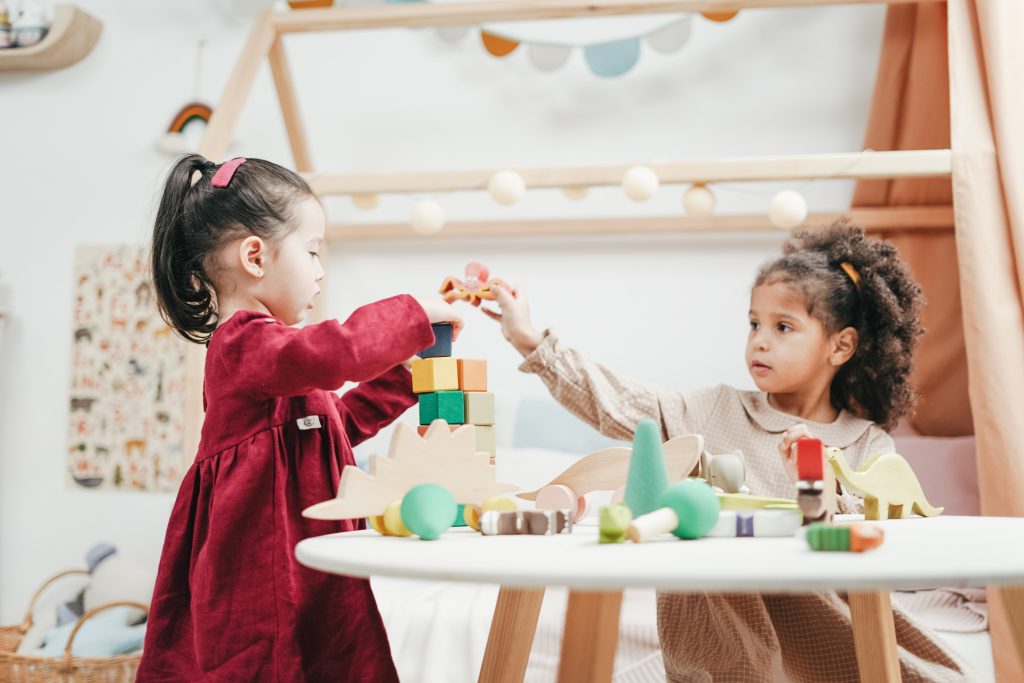The children and babies’ apparel industry is one of the most in-demand industries worldwide with the U.S. market alone being valued at $62 billion in 2019. Annual growth is also expected to jump by 3.23% from 2022 to 2026. It’s for this reason that Once Upon A Child is seen as a forward-thinking company that was able to spot this trend early on.
Ranking 177th place on Entrepreneur’s Franchise 500, the company continues to help millions of customers while earning hundreds of millions of dollars through the years.
Before we take a look at the profitability of Once Upon A Child and the children’s apparel industry, let’s dive into what the company is about.
- What is Once Upon A Child?
- Who Started Once Upon A Child?
- How Many locations Does Once Upon A Child Have?
- Is Selling Baby Clothes Profitable?
- Is Once Upon A Child Profitable?
- Why is the Resale Market So Profitable?
- How Do You Bring Clothes to Once Upon A Child?
- Once Upon A Child: The Leading Children’s Resale Company
What is Once Upon A Child?

Once Upon A Child is a resale retail store that aims to provide a quality selection of gently used children’s and babies’ clothes, shoes, toys and furniture.
From its inception, its goals have included helping out parents with kids who have outgrown their things as well as helping parents who love shopping for their kids but are on a budget.
The sustainability aspect of the business is also extremely important as they’re also able to help protect the environment. When people bring in and sell their gently used kid’s items like clothes and furniture, they’re able to recycle their things and save an insurmountable amount of resources.
Who Started Once Upon A Child?

Dennis and Lynn Blum started Once Upon A Child in 1985. With three boys herself, she knew exactly how challenging and expensive it was to raise children.
Mrs. Blum saw firsthand how hard-earned money goes into children’s clothing, furniture, and toys, then is outgrown by the kids even before the things have the chance to be fully used.
Since children grow up so fast, many don’t have the chance to wear out their clothes and toys. Instead of storing them in a room or even throwing them away, it’s best to recycle and sell them.
The idea of recycling pushed Lynn Blum to build a place where parents could both make money and save money. Thus, Once Upon A Child was born.
While the company was founded in 1985, the franchising rights for Once Upon A Child were sold to Winmark Corporation (formerly Growbiz International) in 1992. The Blums continue to own and operate 8 stores in Columbus and Toledo. They also own other resale stores that aren’t affiliated with Winmark.
How Many locations Does Once Upon A Child Have?
Once Upon A Child has more than 400 store locations across North America. The company purchases millions of items yearly and sells even more units ranging from clothes, toys, furniture, equipment, and books.
Is Selling Baby Clothes Profitable?
Yes, selling baby clothes is profitable. Parents today are more conscious about their kids’ style, opting for more fashionable choices. Huge catalysts for the profitability of babies and kids’ apparels are social media and the shifting trends in fashion.
The global baby apparel market is expected to reach more than $82 billion by 2027.
There’s also the aspect of sustainability. Sustainable clothing is being promoted worldwide by brands like Gerber which also launched their organic clothing brand Gerber Modern Moments baby apparel.
The demand for fashionable yet eco-friendly baby clothes is on the rise and is projected to have a profitable impact on consumption rates.
Lockdown restrictions due to the Coronavirus Pandemic did hinder the market growth. But as cases continue to go down, stores are reopening in major countries and there’s also the growth of online shopping. With this progress, sales are expected to jump in the near future.
Is Once Upon A Child Profitable?
The secondhand market is booming and is expected to reach $53 billion by 2023. This is because buyer demands are shifting. Not only are they looking for quality items at a cheaper price, but they’re also leaning towards sustainable ways of getting their hands on unique items.
Unlike most retailers that have been focusing on increasing their prices because of inflation, resale retail companies aren’t experiencing the same kind of pressure. Their goal is to lower their prices to attract as many buyers as possible.
Once Upon A Child operates the same way, which is why they’re now a leader in the children and baby’s resale market.
There is also an increase in product demand. Since the advancements in medical sciences have successfully reduced infant mortality rates, there are more live births and an increase in newborns in recent years compared to how it was in 1994.
Infants also quickly outgrow their sizes which leads to more frequent purchases of apparel and toys.
Once Upon A Child’s success hinges on a business model that aims to encourage loyal customers to come back.
One of the things that make Once Upon A Child stand out is that they don’t cosign like some of their competition and the sellers get paid cash on the spot. They also stay true to their values, as many of their franchise owners partner with charities to give back and support others in need.
Why is the Resale Market So Profitable?
Aside from the booming market and the change in buyer demands, there are other factors that influence the resale market’s growth. Some of the main ones are listed below.
- Many people now accept the resale concept. About 1 in 5 Americans shop for secondhand goods each year. This is because most buyers are not aiming to get the best value for their money and quality resale items from retail shops like Once Upon A Child can offer them what they’re looking for.
- Business-to-business services are now available to help resale retail businesses distribute their goods. Since there is a demand for secondhand goods, there is now a range of B2B services that can help resale sellers with each step of the business.For example, there are now logistics and management services like Lizee’s logistics services that offer rental solutions for resale businesses.
- Millennials and Gen Z have grown up. Millennials love thrifting, add in Gen-Z and you have two generations that seek sustainable products and quality brands for an affordable price. The millennials and Gen Z are now major consumers. Data shows that by 2025, Gen-Z workers will make up 27% of the workplace. Not just the millennials, but Gen-Z now has the spending capacity, and some of them have even started a family themselves.
- Resale shoppers are loyal. Shoppers who have already shopped at a resale shop are more likely to continue this habit for as long as they have a positive shopping experience with the shop.
Research suggests that resale items are predicted to grow from 6% to 11% in closet share by 2027. This means that more people will own resale items in their closets compared to traditional retail goods.
How Do You Bring Clothes to Once Upon A Child?
Selling your kid’s gently used items like shoes, baby gear, toys, furniture, and clothes is fairly simple.
Here are the steps you can take:
- Bring it in-store.
- The store employee will check and review the items based on their guidelines. This includes the condition, safety standards, and style.
- You will be offered a price, and if you accept, you’ll get paid in cash.
Here are the general guidelines for sellers:
- Clothes should be in good condition.
- Toys, furniture, and equipment must have all parts and should meet safety standards.
- Clothes should be nearly folded or put in a box, tote, or bin.
- Bring your ID.
- Call ahead of time to make sure that your items are eligible.
Once Upon A Child: The Leading Children’s Resale Company
Once Upon a Child is now ranked 177th in Entrepreneur’s 43rd annual Franchise 500 climbing 56 spots from its previous ranking. It’s viewed as one of the top franchises that challenged and shaped the industry over the past years.
Once Upon A Child’s business model is positioned for growth as it ticks off the most important boxes when it comes to running a successful business namely:
- Demand. As long as parents are looking for quality and affordable products, Once Upon A Child will be able to provide for those needs.
- Supply. There will always be parents who have things that their kids have outgrown and who are looking for new ways to earn money, so selling their kids’ gently used items for extra cash is an easy way to do so.
Once Upon A Child makes it easy for people to sell their products which makes it an effective business model. - Product longevity. They won’t have to worry about following a certain trend as the company is buying gently used items every year.
- Company values. Once Upon A Child has well-defined values. Wanting to provide parents the ease of buying quality products for their children at an affordable price. The business is also environmentally friendly and sustainable which is also a major selling point.
The company is an example of a brand that has managed to target a niche with strong consumer demand, an infallible business model, and a focus on a solid level of economics.
If you’re looking to invest your money in the right place then look into franchising and see if a Once Upon A Child franchise could be an option for you.




